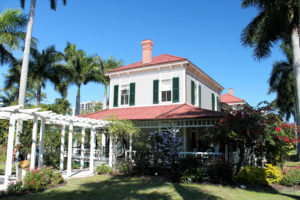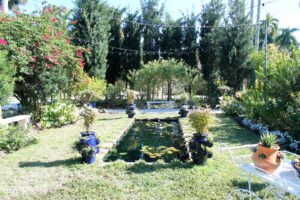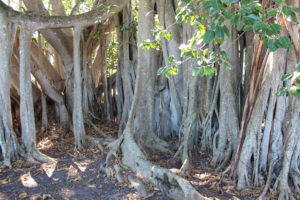Edison and Ford Were into Plants?
February 26th, 2019
Thomas Edison, America’s greatest inventor, and Henry Ford, the father of the moving assembly line and his namesake car company, had more in common than fame, innovation, and a whole lot of money.
They both also were very interested in plants.
Edison was especially keen on bamboo and thought it would make the perfect filament for his new electric light bulb. He also surrounded his New Jersey home with a fine collection of native and unusual trees.
Ford was fascinated by the common soybean, which was an up-and-coming crop in the early 1900s. He used soybeans to make car-horn buttons and ornamentation on gearshift knobs and even wore a suit made out of soybean fiber.
He once tried Spanish moss as stuffing in some of his Model T seats, only to find that if you didn’t adequately treat the chiggers (“red bugs”) that often infested this tree-hanging bromeliad, drivers could get some unwanted surprises in their downward-facing end.
Ford’s wife, Clara, also was a big-time rose fancier who planted 10,000 roses in a five-acre rose garden on their Michigan estate.
But it was in Florida where Edison and Ford paired up on a plant-related project that ultimately fizzled.
Both Ford and Edison thought America needed a source of rubber latex that could be grown in America. They were concerned the country was too dependent on a newly important resource that was largely foreign-supplied.
In 1927, they founded the Edison Botanic Research Corp. along with tire magnate Harvey Firestone to experiment with 17,000 plants that might be good for latex harvesting.
The research took place at a winter property called Seminole Lodge that Edison built in Fort Myers, Fla., in the late 1880s while looking for a place to escape New Jersey winters.
Turns out the ideal source wasn’t rubber trees (Ficus) or any kind of tree or shrub, for that matter. The company’s latex plant of choice was a native perennial flower, the goldenrod.
The finding didn’t really matter since synthetic rubber came along and ended the possibility that we all might be driving around on goldenrod tires.
The remaining vestiges of this fascinating story can be seen on the grounds of the 20-acre Edison and Ford Winter Estates, one of America’s most visited historic-home sites and well worth seeing if you’re ever midway down Florida’s West Coast. I saw it for the first time last month.
Edison and Ford actually had homes next to one another in Fort Myers.
Edison bought 13 acres of land along the Caloosahatchee River in 1885 and built a lodge, study, and winter-time lab there.
He and his wife, Mina, added a guest house next to the main house and enjoyed winters there for decades.
In 1914, Edison invited Ford and his family to Fort Myers. They liked the site so much that they bought the Craftsman home next to Edison’s guest house two years later.
Ford’s home was called “The Mangoes” for the grove of mangoes that grew in the front yard. Ford reportedly loved to sit on the front porch and look out over the mango trees.
The mangoes are gone, but the Estates added a small rose garden there in 2013 to mark Clara’s love of roses.
At the Edison home, there’s a Moonlight Garden that was designed in 1929 by the famous landscape architect Ellen Biddle Shipman. It’s a small garden with mostly fragrant blue and white flowers and a centerpiece of a rectangular pool, designed to reflect moonlight at night.
Part of the research garden is still on the grounds. The highlight there is one of the largest banyan trees in the U.S.
This version of fig looks like a grove of trees, but because of how the tree’s branches hang down and continually root farther and farther out and around, it looks like a colony. That’s why the species is nicknamed the “walking tree.”
All in all, the 20 acres is filled with 1,700 plants of 400 species – many of them curious specimens from the tropics and sub-tropics.
The collection includes 60 species of palms; more than a dozen kinds of bamboo; lots of cycads and butterfly plants; edibles such as starfruit, jackfruit, and loquat; a new collection of succulents, and oddities such as the sausage tree with its sausage-like fruits, the silk floss tree with its menacingly thorny trunk, and a huge Mysore fig with roots that stick up like wooden wall panels.
The palm-lined, river-side location makes a nice setting for a visit, especially in winter. It certainly beats a Pennsylvania February as well as a New Jersey and Michigan one. That’s one thing Edison, Ford, and I can all agree on.











